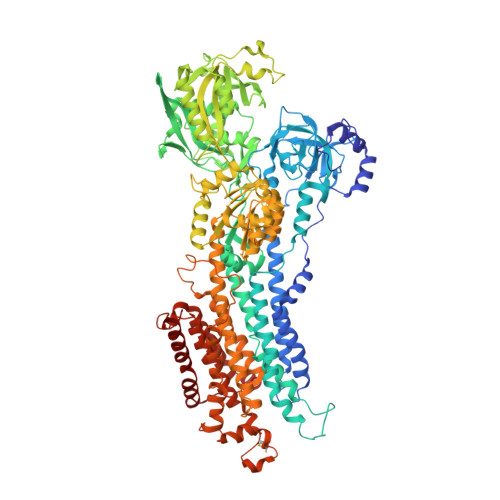How processing of aspartylphosphate is coupled to lumenal gating of the ion pathway in the calcium pump
Toyoshima, C., Norimatsu, Y., Iwasawa, S., Tsuda, T., Ogawa, H.(2007) Proc Natl Acad Sci U S A 104: 19831-19836
- PubMed: 18077416
- DOI: https://doi.org/10.1073/pnas.0709978104
- Primary Citation of Related Structures:
2ZBE, 2ZBF, 2ZBG - PubMed Abstract:
Ca(2+)-ATPase of skeletal muscle sarcoplasmic reticulum is the best-studied member of the P-type or E1/E2 type ion transporting ATPases. It has been crystallized in seven different states that cover nearly the entire reaction cycle. Here we describe the structure of this ATPase complexed with phosphate analogs BeF(3)(-) and AlF(4)(-) in the absence of Ca(2+), which correspond to the E2P ground state and E2 approximately P transition state, respectively. The luminal gate is open with BeF(3)(-) and closed with AlF(4)(-). These and the E1 approximately P.ADP analog crystal structures show that a two-step rotation of the cytoplasmic A-domain opens and closes the luminal gate through the movements of the M1-M4 transmembrane helices. There are several conformational switches coupled to the rotation, and the one in the cytoplasmic part of M2 has critical importance. In the second step of rotation, positioning of one water molecule couples the hydrolysis of aspartylphosphate to closing of the gate.
- Institute of Molecular and Cellular Biosciences, University of Tokyo, 1-1-1 Yayoi, Bunkyo-ku, Tokyo 113-0032, Japan.
Organizational Affiliation:


















